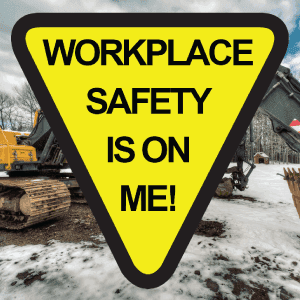Every company has its own level of commitment to workplace safety. Considering the consequences of an incident to the individual, can an employee afford the risk of leaving safety up to the employer? Injury, loss of limbs, inability to work, and even death can result from even a minor incident. Furthermore, workers' compensation pays only a fraction of wages and an employee may never fully recover from an injury and may never work to the same capacity again. It's fairly clear that each and every employee should take responsibility for safety in their workplace.
3 Types of Employer Commitment
For an employee to contribute to safety in the workplace, understanding how committed the employer is can help define roles and responsibilities. Here are 3 basic types of companies with commitments to safety varying from doing only what's legally required all the way to actively creating a safe working environment:
Compliance Only
Some companies view workplace safety as an inconvenience with any expenditures dedicated to compliance with regulations treated as an expense. In these companies, safety programs are a minimum commitment to safety as required by regulators. Workers are socially discouraged from discussing safety or highlighting potential hazards. Managers dread the idea of doing paperwork while taking a fully reactive approach to workplace incidents.
In these companies, an employee must take every precaution necessary to work within the limited resources available to acting safely. He is responsible only for not personally contributing to an unsafe workplace while avoiding notable dangers.
Safety for Profit
Other companies truly care about workplace safety, and take it seriously, but do not make it a priority. These companies are fully aware that incidents lead to high costs from injuries, work stoppages, equipment damage, and increasing insurance premiums. The goals for their workplace safety programs, therefore, are to prevent incidents and reduce risk of fines for violating workplace health and safety regulations.
Typically, management is open to ideas for improving safety, just as long as the financial benefits of reducing or eliminating incidents outweigh the cost of compliance. Managers may take a proactive approach to preventing incidents and ensuring their staff are well versed in safety policies. For these types of safety programs to work, each employee must actively participate in them while volunteers throughout the company must be their champions.
A Full Commitment to Safety
In companies that make safety their top priority, company rules, procedures, mission, and vision align fully with creating a safe and productive workplace. For example, Kiewit publishes their commitment to safety right on their website. In companies like this, the details of their safety programs are clearly communicated to all employees, new and experienced and employees are encouraged to actively improve workplace safety.
Management takes a proactive approach to safety, fully involved in creating a safe work environment for their employees. In this type of company, the employee plays an integral part of the "Safety-First" culture. She must take their role in the program seriously and work with management to continually improve the risk reduction capabilities of the company.
Universal Worker Responsibility
Regardless of company commitment, the worker can contribute to a safer work environment by following these simple rules:
- Continuously scan your environment for obvious hazards
- Ensure you fully understand company safety procedures
- Know who to talk to when reporting past incidents or identifying potential hazards
- Be aware of unsafe behaviors in yourself and others and take corrective actions
- If your employer continues to provide an unsafe working environment, report them as you could be saving lives











